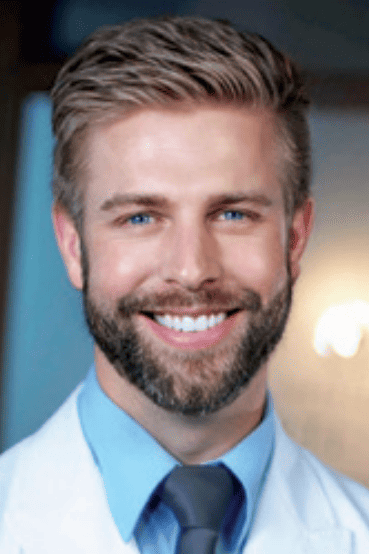Dr. Alex Smith fights a war on edentulism every day — with implants, realistic expectations, and technology.
From the earliest years of my career, I have been committed to combating edentulism. During my dental school years, my focus shifted towards prosthetics and surgery. At The Ohio State University College of Dentistry (2009-2013), implantology discussions were superficial, lacking extensive training in surgical or prosthetic components. Implants seemed reserved for specialists, while general dentists were advised to stick to tasks like fillings. As an implantology educator, I consistently advise my mentees that implants are the backbone of the war on edentulism.
I have realized that, almost always, an implant is the optimal solution for replacing a missing tooth. Learning how to replace missing teeth became crucial for enabling people to chew better, promoting healthier and happier lives. Without implants, our only fixed solution for missing teeth is a tooth-borne bridge. The absence of a terminal tooth raises the question — is suggesting a distal extension removable prosthesis the only viable option for a general dentist? We need to do better and provide fixed solutions for the edentulous or partially edentulous patient.
Early in my practice, I embraced dental technology, a powerful yet often underutilized tool due to reservations about educational and financial investments. Postgraduate courses, fellowships, mentors, and the use of intraoral cameras, digital impressions, and CBCT made me comfortable enough to safely start placing routine dental implants. My journey began with fully surgically guided implant placements, impressing me with the accuracy and ease of the workflow, particularly in suitable cases (good bone, thick soft tissue, healthy patients, etc.). Providing the best option for restoring the partially edentulous patient was immensely gratifying. Subsequently, my journey delved into more complicated cases, aiming to offer more for my patients.
Recognizing the necessity to master various elements of surgery, periodontics, and prosthodontics, I explored socket preservation, guided bone/tissue regeneration, sinus augmentation, soft tissue grafting, and full-arch fixed solutions in traditional dental alveolar bone and remote anchorage.
The journey progressed from an analog workflow to a digital one. Our practice is now 99% digital with a fully functional in-house dental lab. We implement technology through 3D printing, milling (Zirconia, PMMA, titanium), custom abutments/implant restorations, removable dentures, implant-retained dentures, and implant-supported prosthetics such as full-arch fixed solutions.
Our practice targets individuals in need of full mouth rehabilitation with realistic expectations and psychological stability. Changing people’s lives is a source of great satisfaction, and they appreciate our work. While our primary goal is to save teeth whenever possible, it is crucial that if we have a patient in terminal dentition, fully or partially edentulous, we possess the training, education, and technology to provide a pathway back to optimal oral health with fixed implant solutions. I urge my colleagues to join the war on edentulism by leveraging the best surgical and prosthetic modalities available — implant-supported prosthetics.
Stay Relevant With Implant Practice US
Join our email list for CE courses and webinars, articles and mores

 Alex Smith, DDS, was raised in Bend, Oregon and pursued a degree in Human Physiology at the University of Oregon before earning his dental degree from The Ohio State University College of Dentistry. Following his academic journey, Dr. Smith dedicated 4 years to the U.S. Army Dental Corps, serving in Korea and at Ft. Bragg. A Dental XP Fellow and a member of both AAID and ABOI, Dr. Smith is committed to continuous learning and professional development. He also serves as a mentor at Implant Pathway, demonstrating his dedication to sharing knowledge and expertise within the dental community. Currently, as the owner of Dental Artistry Implants-Crowns-Veneers, Dr. Smith operates a DPO and actively seeks like-minded partner doctors to collaborate in the collective effort against edentulism. With aspirations to become a Diplomate at the ABOI, Dr. Smith remains passionate about advancing dental care and making a positive impact on patients’ oral health.
Alex Smith, DDS, was raised in Bend, Oregon and pursued a degree in Human Physiology at the University of Oregon before earning his dental degree from The Ohio State University College of Dentistry. Following his academic journey, Dr. Smith dedicated 4 years to the U.S. Army Dental Corps, serving in Korea and at Ft. Bragg. A Dental XP Fellow and a member of both AAID and ABOI, Dr. Smith is committed to continuous learning and professional development. He also serves as a mentor at Implant Pathway, demonstrating his dedication to sharing knowledge and expertise within the dental community. Currently, as the owner of Dental Artistry Implants-Crowns-Veneers, Dr. Smith operates a DPO and actively seeks like-minded partner doctors to collaborate in the collective effort against edentulism. With aspirations to become a Diplomate at the ABOI, Dr. Smith remains passionate about advancing dental care and making a positive impact on patients’ oral health.

